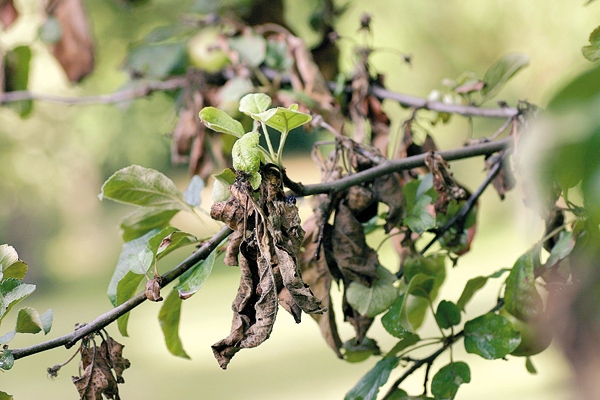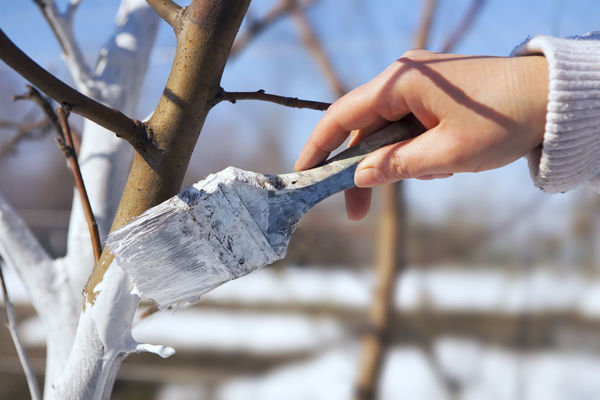Effective methods of dealing with cherry moniliosis
Content
Signs
Throughout the growing season of various varieties of cherry, many gardeners are puzzled by the problem of the appearance of pests characteristic of them on trees and methods of effective control of them. Most often, such misfortunes as shoot moth, cherry aphid, perforated leaf spot, weevil, anthracnose, as well as moniliosis and coccomycosis are capable of spoiling the appearance of different varieties of cherries. Moreover, the last two are dangerous fungal diseases for the growth and development of cherries of any kind. If once gardeners assumed that frosts were the reasons for poor growth or even death of trees, now it is already clear that the name of the modern cherry plague is different - coccomycosis and moniliosis. It is because of these fungal diseases that many tree varieties bear fruit not in 15, but in half less years. What are the main signs of cherry moniliosis? This dangerous disease can appear not only on the fruits and shoots of cherry trees, but also on other stone fruit crops, as well as pome trees. But if for other crops the disease with moniliosis can only mean a loss of yield, then any of the cherry varieties can die altogether. This attack has a second name gray rot, because on the surface of the fruit you can easily find gray dents. The first signs of a fungal disease are often found with the onset of spring, precisely at the time when the culture begins to bloom.
What are the main signs of cherry moniliosis? This dangerous disease can appear not only on the fruits and shoots of cherry trees, but also on other stone fruit crops, as well as pome trees. But if for other crops the disease with moniliosis can only mean a loss of yield, then any of the cherry varieties can die altogether. This attack has a second name gray rot, because on the surface of the fruit you can easily find gray dents. The first signs of a fungal disease are often found with the onset of spring, precisely at the time when the culture begins to bloom.
Since at this moment the spores of the pathogen of the virus, which are spread by the wind, get to the pistils of the flowers, through which they germinate in the stalks, after which they are thrown onto young leaves and shoots. The appearance of a tree affected by moniliosis is as if it had been in a fire - charred branches, dried flowers and leaves.  The fruits of any sort of cherry, suffering from moniliosis, are covered with an ugly bloom of rot, which is unevenly located on them. Both moniliosis and coccomycosis can be most severe on fruits after a warm winter or cool weather in May - June. And in the event that the spring ended with long rains, one can expect an epidemic of moniliosis and coccomycosis.
The fruits of any sort of cherry, suffering from moniliosis, are covered with an ugly bloom of rot, which is unevenly located on them. Both moniliosis and coccomycosis can be most severe on fruits after a warm winter or cool weather in May - June. And in the event that the spring ended with long rains, one can expect an epidemic of moniliosis and coccomycosis.
What is dangerous
How can such extremely dangerous diseases as moniliosis and coccomycosis (the presence of unwanted spots on the surface of the leaves) harm the normal life of various varieties of cherries? In the presence of a fungal infection, not only the tips of the shoots dry out, but also the buds, and the fruits become underdeveloped and small. The gum flow of the trunk is observed, the bark peels off, after which the trees not only cease to bear fruit, but eventually die. With coccomycosis, diseased trees already at the beginning of the last month of summer lose their beautiful green crown, and dried fruits hang on them until next spring. When moniliosis affects one of the fruit trees on the site, then after a short period of time it spreads to cherries throughout the district.Even a very high hedge is not an obstacle to this misfortune, since spores are easily carried by the wind, as well as by streams of rainwater. Although at first glance it may seem that there is no point in fighting this nuisance, it is necessary to limit its negative impact.
With coccomycosis, diseased trees already at the beginning of the last month of summer lose their beautiful green crown, and dried fruits hang on them until next spring. When moniliosis affects one of the fruit trees on the site, then after a short period of time it spreads to cherries throughout the district.Even a very high hedge is not an obstacle to this misfortune, since spores are easily carried by the wind, as well as by streams of rainwater. Although at first glance it may seem that there is no point in fighting this nuisance, it is necessary to limit its negative impact.
Disease-prone varieties
It is sad that there are not so many varieties of cherries that are resistant to fungal infection.
Some sources claim that cherries and some types of cherry-cherry hybrids do not succumb to this disease. But this does not correspond to the truth, since cherries, like cherry crops, suffer from adversity quite often. Such varieties as Tamaris, Novella, Brunetka, Oktava, Shokoladnitsa, Gurtyevka, Volochaevka, Rastorguevskaya, Pamyati Vavilov, Bulatnikovskaya have an increased immunity to this disease.  All other types of fruit trees have an equal chance of being infected with a fungal infection. Experts continue to work on breeding tree species resistant to moniliosis and coccomycosis, which cannot but please all novice and experienced gardeners.
All other types of fruit trees have an equal chance of being infected with a fungal infection. Experts continue to work on breeding tree species resistant to moniliosis and coccomycosis, which cannot but please all novice and experienced gardeners.
Control measures and prevention
Many fruit crop owners are concerned with an important question - how to treat emerging dangerous infections? What measures must be taken when the very first signs of adversity are detected? You should immediately rid the plant of all affected shoots, branches, flowers, because they represent a dangerous source of spread of the pathogen of the virus to crops in the immediate vicinity. It is also necessary to clean all the branches from the fruits. If this is not done carefully, then next spring the fungus from a diseased culture will migrate to others without problems. All branches, foliage and fruits must be burned without fail. An important point in the fight against the spread of fungal infections is also prevention. This includes the spring whitewashing of trunks and skeletal branches, as well as their treatment with solutions of fungicides. Before flowering, it is recommended to spray the garden with Bordeaux liquid; copper or iron sulfate, or nitrafen are also well suited for this purpose. It is also necessary to process the crops again after the end of flowering, but it is necessary to trace whether the applied preparations cause leaf burns.
An important point in the fight against the spread of fungal infections is also prevention. This includes the spring whitewashing of trunks and skeletal branches, as well as their treatment with solutions of fungicides. Before flowering, it is recommended to spray the garden with Bordeaux liquid; copper or iron sulfate, or nitrafen are also well suited for this purpose. It is also necessary to process the crops again after the end of flowering, but it is necessary to trace whether the applied preparations cause leaf burns.
Video "Cherry Moniliosis"
The recording shows trees with moniliosis and tells about the main signs of this disease.
